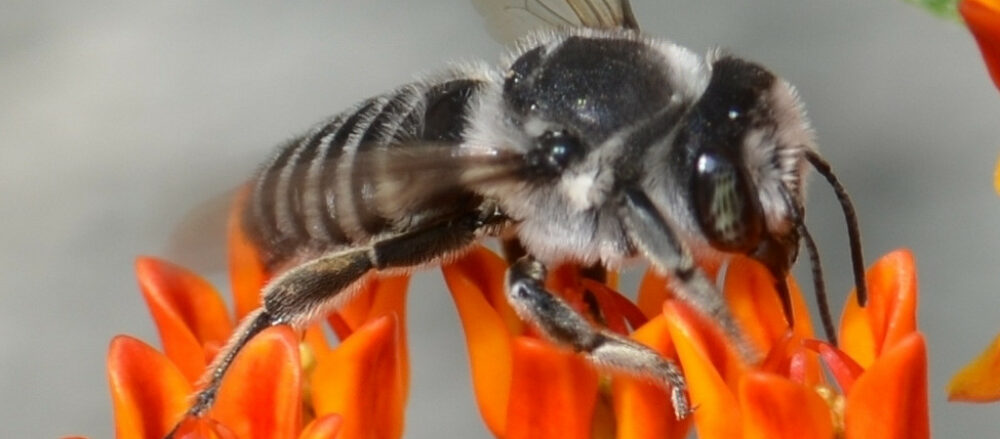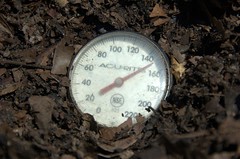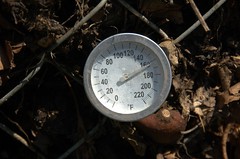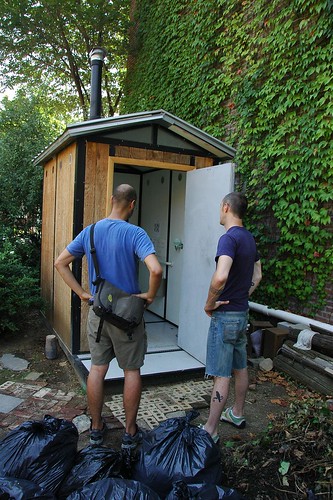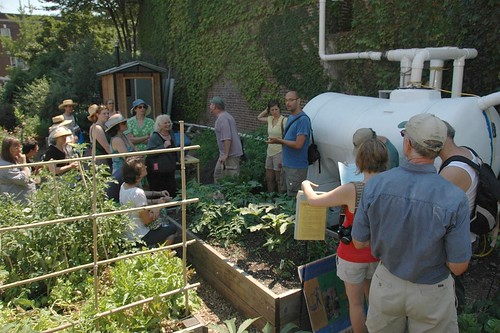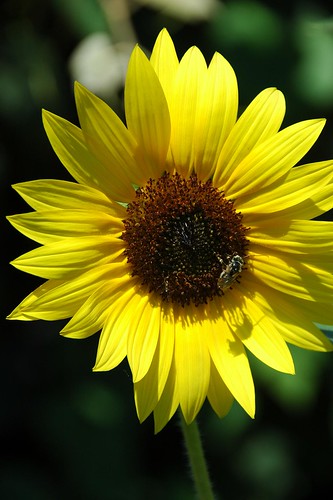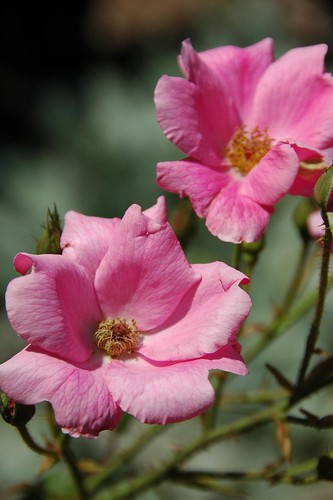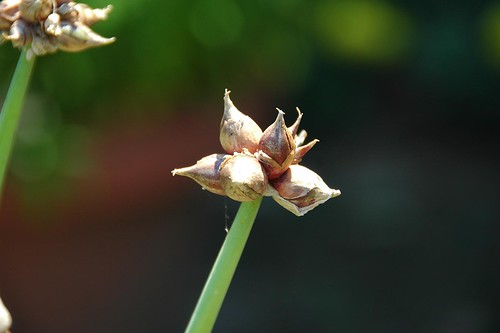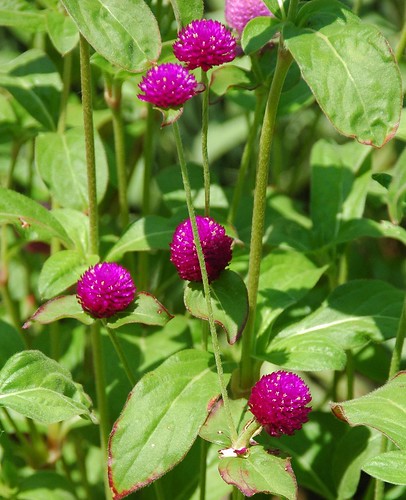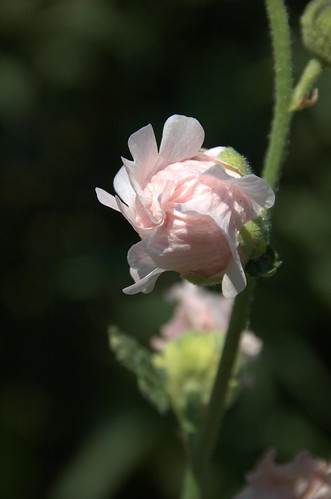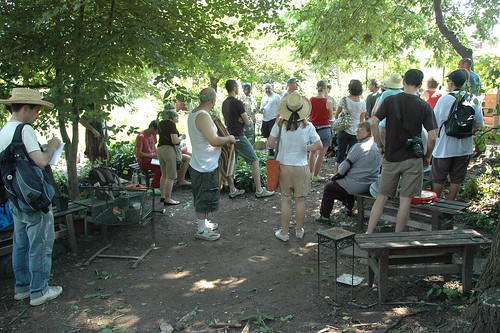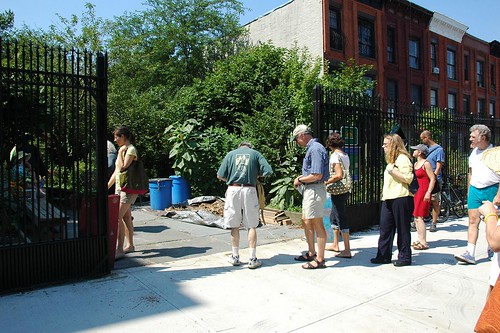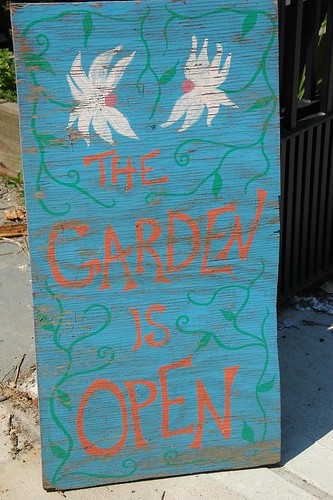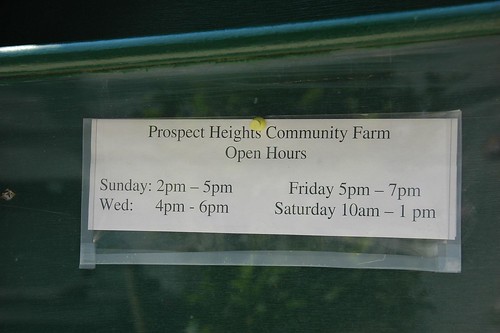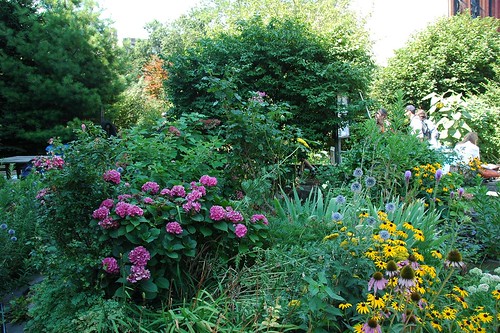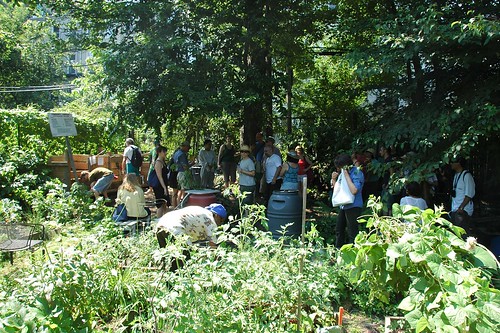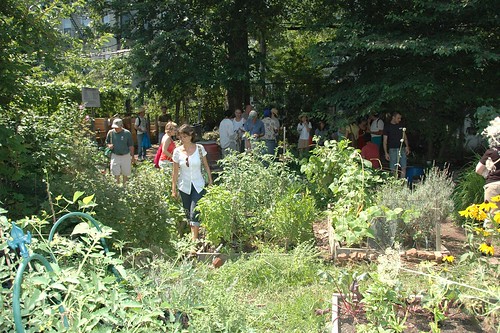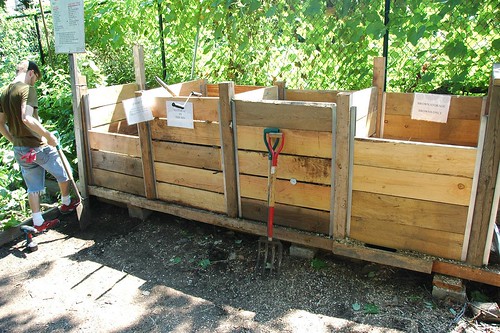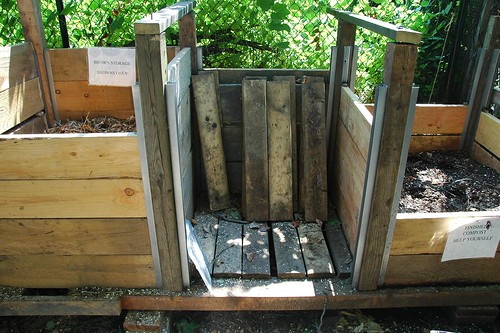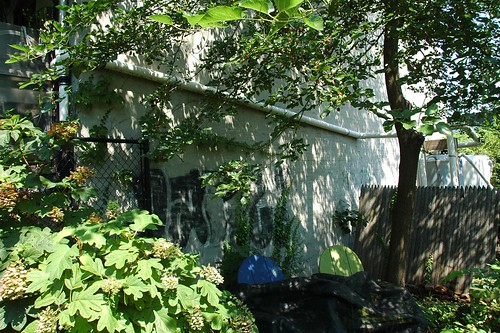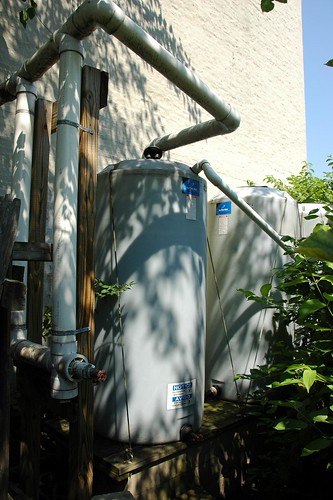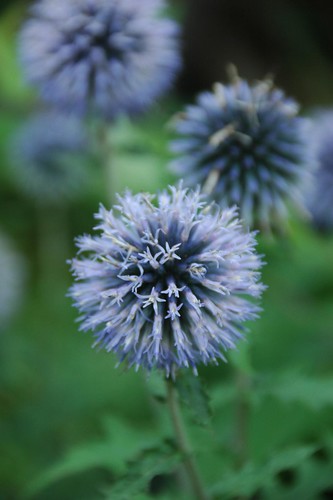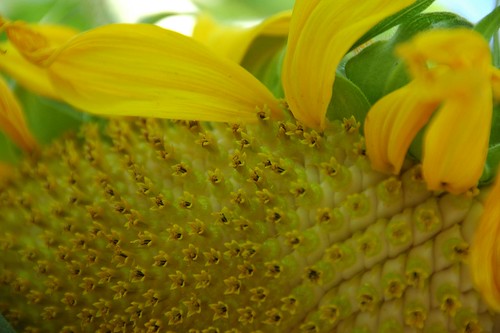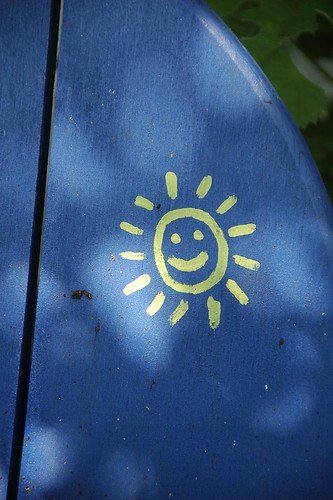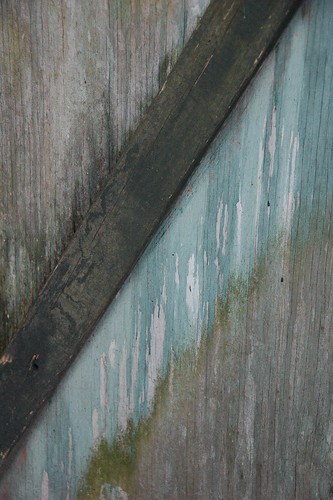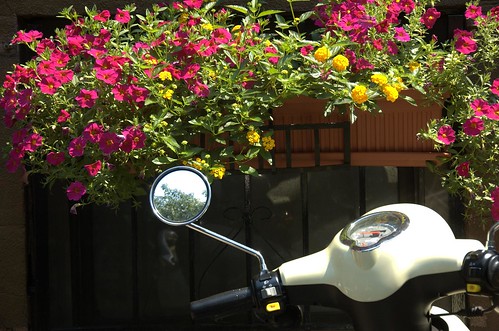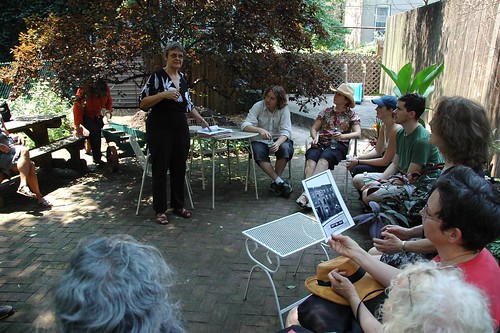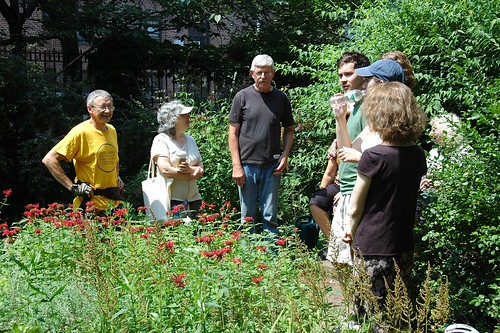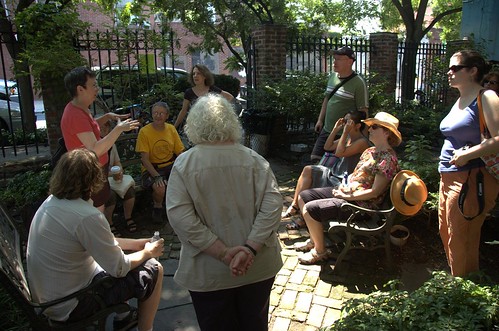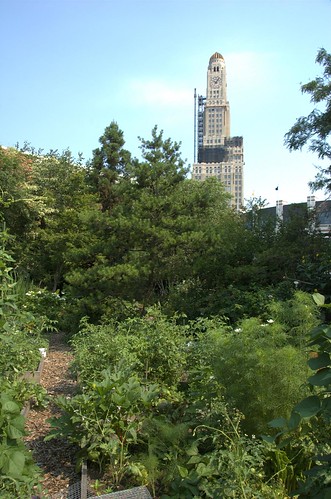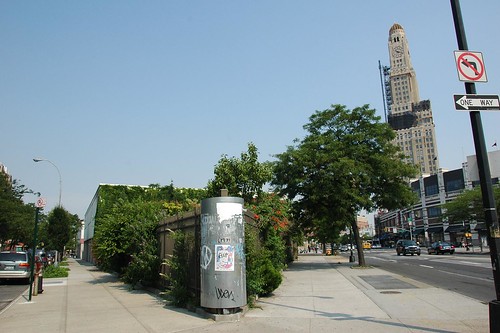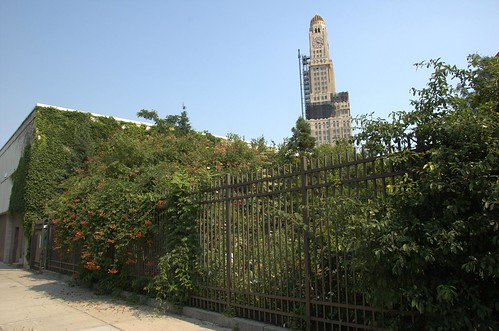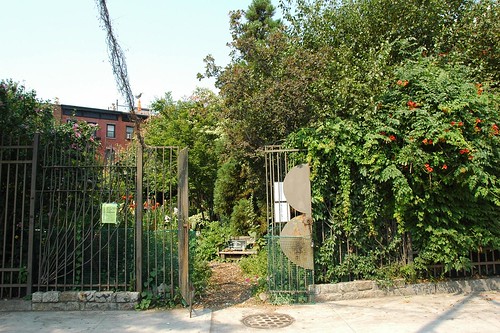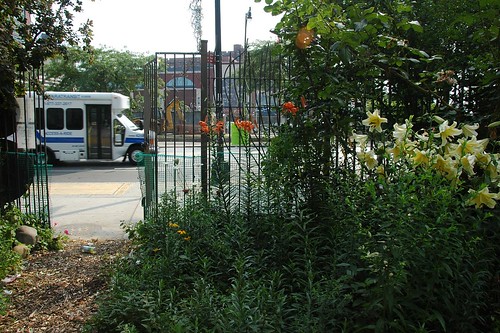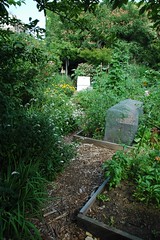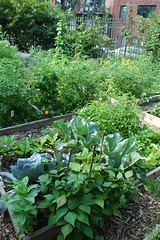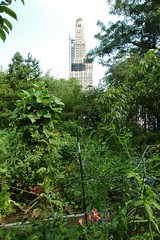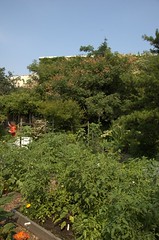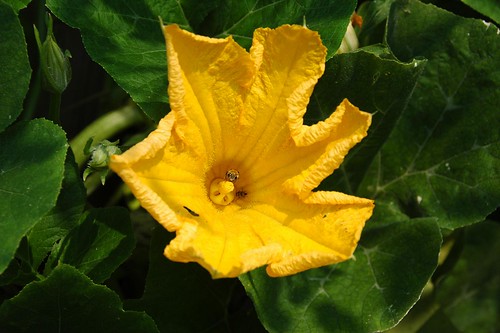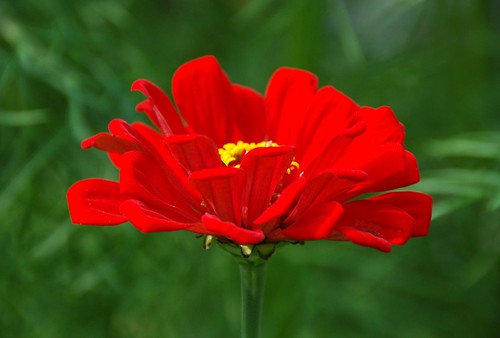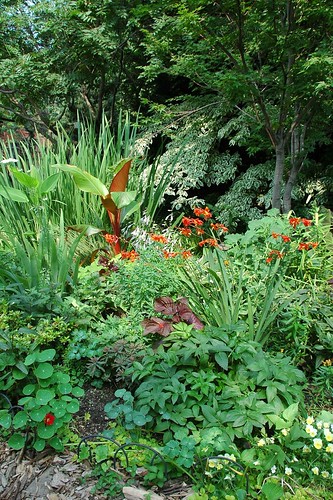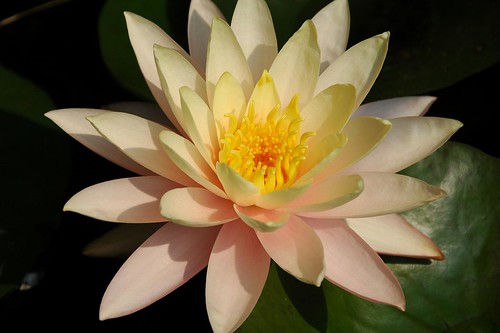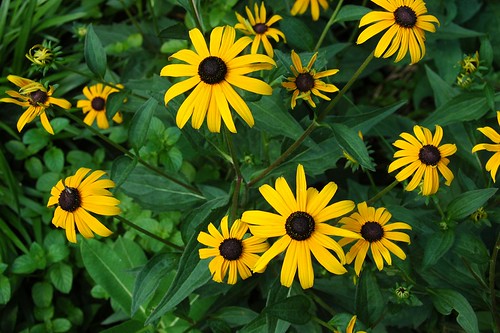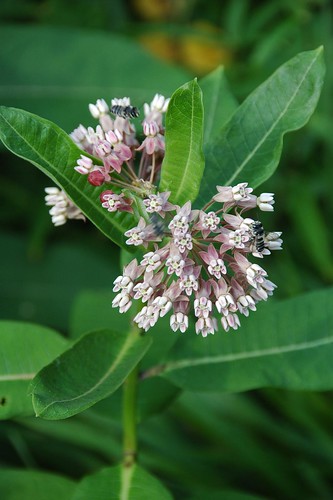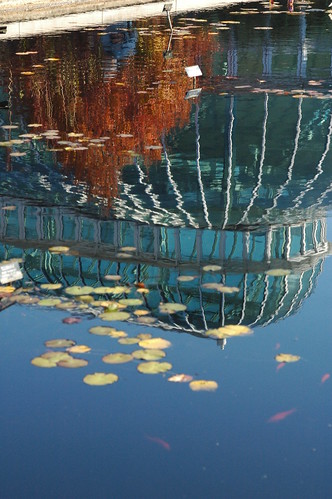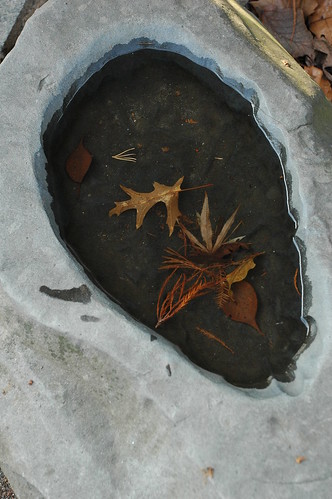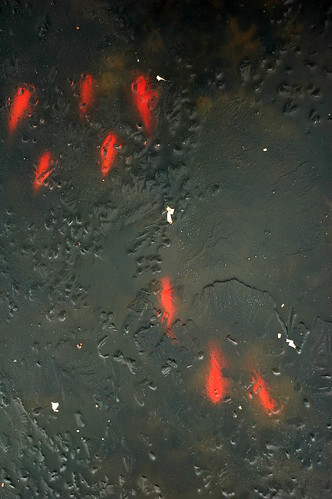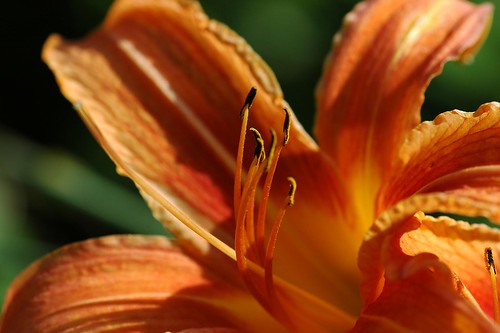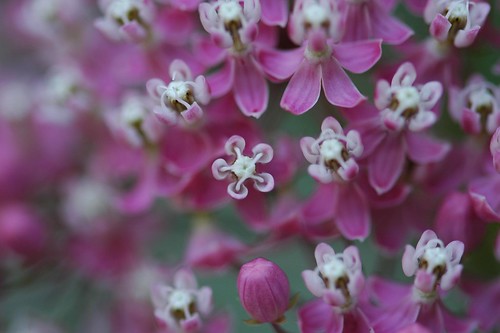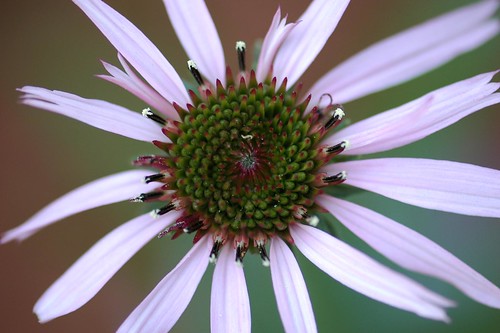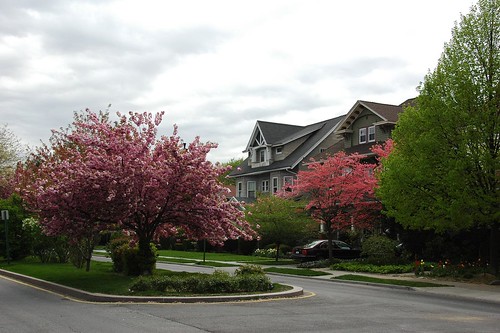The Green With Envy Tour gets an explanation of the water collection system at the Hollenback Community Garden.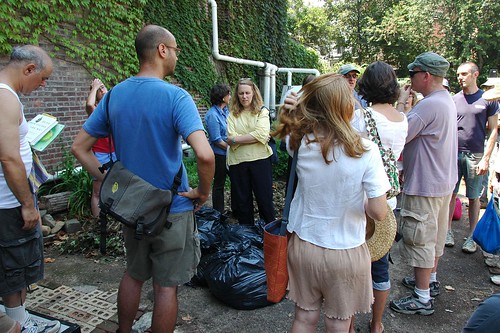
Skipping over stop #4 (we’ll wrap that up with some other short stops at the end), we come to Hollenback Community Garden, stop #5 on Tour 2 of the Green With Envy tour of Brooklyn community gardens. Hollenback is another large community garden. They have the largest and most sophisticated rainwater collection system I’ve seen yet. They have an community composting program. They provide multiple channels for folks to contribute, including their so-far-unique composting toilet.
Street Entrance and Common Areas
Compared to the lush Prospect Heights Farm, in this garden, the common areas near the entrance are spartan.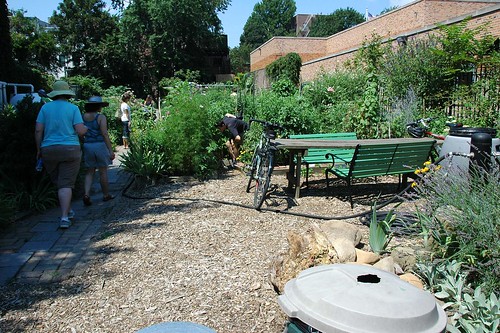
Ornamental plantings line the paths leading into and through the heart of the garden.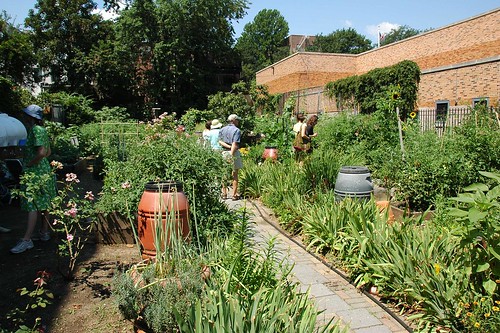

Composting
I was impressed with the scale of these open silos, and the temperatures they achieved.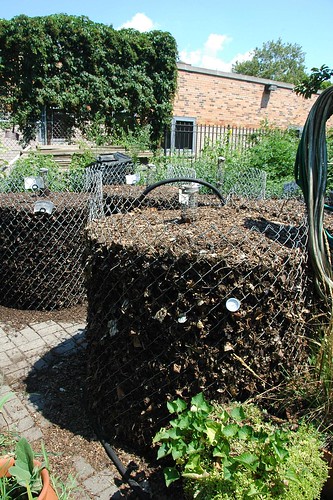
Each silo was carefully labelled.
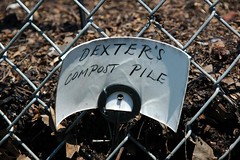
The silos were out in the middle of the garden. They had a sweet aroma. There was another composting area, located in the rear of the garden, as is more common.
The finished material is beautiful.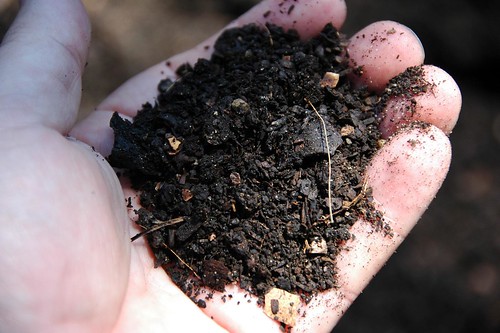
This custom-made compost-mobile is an important element in their collection system. They partner with the GreenMarket, NYC’s farmers’ markets, at Fort Greene Park. They have drop-offs there on the days the Greenmarket operates. They load up garbage cans in the front crate and pedal them back to the garden for composting.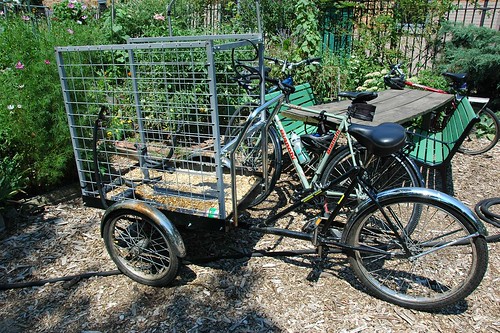
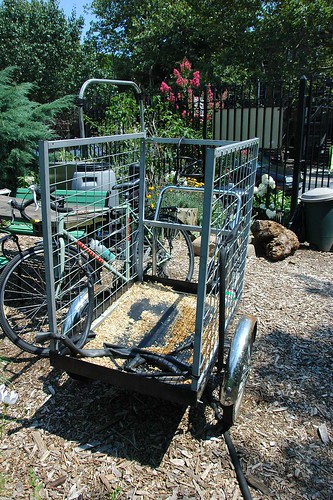
They also have garbage cans at the entrance, just inside the gate, where neighbors can come by and drop off their kitchen scraps even when the garden is not open.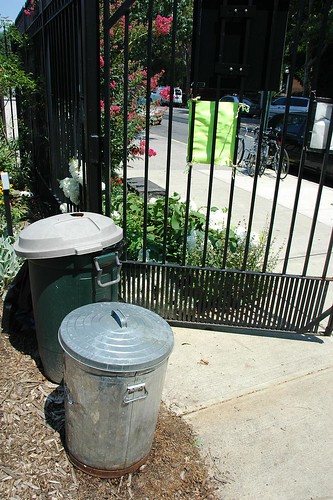
Composting Toilet
This high-end outhouse addresses all the concerns you might have about a composting toilet. There was absolutely no odor around or in this, even when they opened the “basement” lid so we could take a look at the “nightsoil” they’ve collected so far.
The woman on the left seems not so sure of the whole setup.
This sign reminded me of the scene in 2001 regarding the zero-G toilet.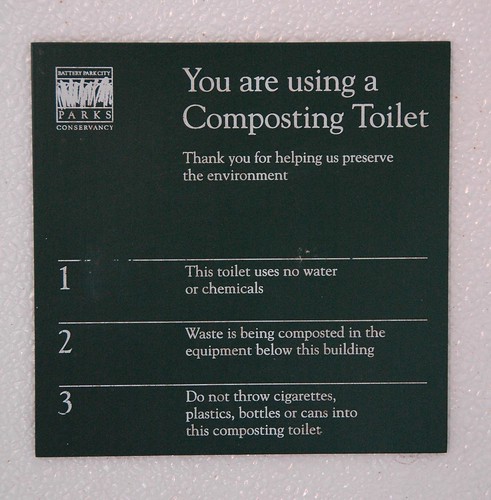
Beneath the base is the finished product. The lid is necessary for periodic maintenance, mainly raking and leveling out the, um, “material”, as well as eventually harvesting the compost. The black lid on the left covers another trap for removing excess liquid. The gray box and white plumbing provide ventilation.
Water Collection
Massive tanks collect water off the flat roof of the adjacent brownstone.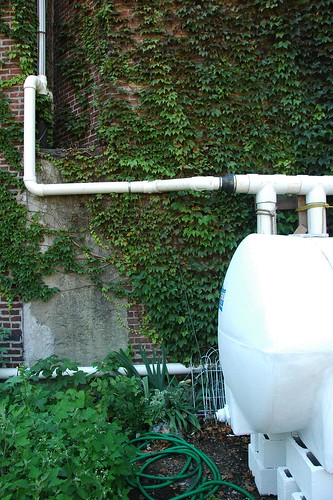
This big “U” trap behind the main tanks is an important part of the system. It collects the initial flush of water off the adjoining roof, which will have the most airborne contaminants. Only when the trap fills does the flow begin filling the tanks. The trap can be drained independently of the tanks.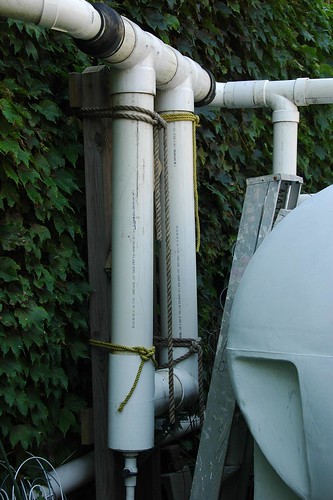
Glam
Very familiar, some kind of Hibiscus, but I can’t place it.
Related Content
Green With Envy Tour II
Pacific Street Bear’s Garden, Park Slope, Green With Envy Tour, II.1
St. Mark’s Avenue Community Garden, Prospect Heights, Green With Envy Tour, II.2
Prospect Heights Community Farm, Prospect Heights, Green With Envy Tour, II.3
Brooklyn Bear’s Garden, Park Slope, Green With Envy Tour, I.1
Hoyt Street Garden, Boerum Hill, Green With Envy Tour, I.2
Wyckoff-Bond Community Garden, Boerum Hill, Green With Envy Tour, I.3
David Foulke Memorial Garden, Boerum Hill, Green With Envy Tour, I.4
Warren-St Marks Community Garden, Park Slope, Green With Envy, I.5
Baltic Street Community Garden, Park Slope, Green With Envy Tour, I.6
Lincoln-Berkeley Community Garden, Park Slope, Green With Envy Tour, I.7
Gardens of Union, Park Slope, Green With Envy Tour, I.8
Green With Envy, Tour One, Final Stops 9 and 10
